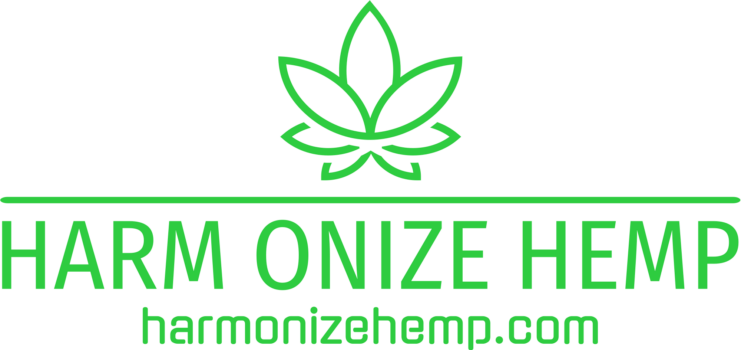Pain Management
Pain management is a crucial aspect of healthcare, affecting millions worldwide. From chronic conditions to acute injuries, pain can significantly impact quality of life. Traditional medications like opioids and NSAIDs are often prescribed, but they come with potential side effects and risks. In recent years, alternative pain relief options have gained attention, including herbal remedies such as kratom powder.
Analgesic Effects
Kratom powder, derived from the Mitragyna speciosa tree, has gained popularity as a natural analgesic. It contains alkaloids, particularly mitragynine and 7-hydroxymitragynine, believed to interact with opioid receptors in the brain. This interaction produces pain-relieving effects similar to opioids, but without the same level of euphoria or risk of addiction.
Traditional pain medications like opioids work by binding strongly to opioid receptors, leading to potent analgesia but also potential for dependence and respiratory depression. NSAIDs, on the other hand, inhibit prostaglandin synthesis, reducing inflammation and pain. However, they can cause gastrointestinal issues and increase the risk of cardiovascular events.
Kratom users often report experiencing pain relief, mood elevation, and increased energy levels. However, research on kratom’s efficacy and safety is still ongoing, with limited long-term studies available. Potential side effects include nausea, vomiting, constipation, and anxiety. Kratom can also interact with other medications, so it’s essential to consult a healthcare professional before using it.
Comparison to Opioids
When comparing kratom powder to traditional pain medications, several key differences emerge.
- Mechanism of Action: Opioids strongly bind to opioid receptors in the brain, causing intense pain relief but also a risk of addiction and respiratory depression. Kratom alkaloids interact with opioid receptors but with a weaker binding affinity, potentially offering pain relief without the same addictive potential.
- Side Effects: Opioids can lead to nausea, constipation, sedation, and overdose. NSAIDs commonly cause gastrointestinal issues like ulcers and bleeding. Kratom may cause nausea, vomiting, constipation, anxiety, or insomnia.
- Addiction Potential: Opioids have a high risk of addiction and dependence. Kratom’s addictive potential is debated, with some studies suggesting it might be lower than opioids but still present.
Potential for Addiction and Dependence
Pain management is crucial for improving quality of life for millions affected by chronic or acute pain.
While traditional pain medications like opioids and NSAIDs are commonly prescribed, they carry risks of addiction, dependence, and unwanted side effects. Kratom powder, derived from the Mitragyna speciosa tree, presents an alternative option gaining increasing attention.
Kratom contains alkaloids that interact with opioid receptors in the brain, producing pain-relieving effects similar to opioids but potentially with a lower risk of addiction.
- Mechanism of Action: Opioids strongly bind to opioid receptors, leading to potent pain relief but also a high risk of dependence and respiratory depression. Kratom alkaloids interact with these same receptors but with a weaker binding affinity, potentially offering pain relief while minimizing addictive potential.
- Side Effects: Opioids can cause nausea, constipation, sedation, and overdose. NSAIDs commonly lead to gastrointestinal issues such as ulcers and bleeding. Kratom may induce nausea, vomiting, constipation, anxiety, or insomnia.
- Addiction Potential: Opioids have a high risk of addiction and dependence. The addictive potential of kratom is still under investigation, with some studies suggesting it might be lower than opioids but not entirely absent.
Anxiety and Depression

Anxiety and depression are common mental health disorders that can significantly impact an individual’s well-being and quality of life. Millions around the world struggle with these conditions, experiencing symptoms such as persistent worry, sadness, loss of interest in activities, and feelings of hopelessness.
Mechanism of Action
Understanding the mechanisms behind anxiety and depression is crucial for developing effective treatment strategies. Anxiety disorders are often characterized by excessive fear, worry, and apprehension, leading to physical symptoms like increased heart rate, sweating, and trembling. The underlying neurobiological processes involve dysregulation of neurotransmitters such as serotonin, norepinephrine, and GABA, which play critical roles in regulating mood, anxiety, and stress responses.
Depression, on the other hand, involves persistent feelings of sadness, emptiness, and a loss of interest or pleasure in activities once enjoyed. Similar to anxiety, imbalances in neurotransmitters like serotonin, dopamine, and norepinephrine contribute to the development of depressive symptoms. Genetic predispositions, stressful life events, and hormonal fluctuations can also play a role in triggering or exacerbating depression.
Efficacy Compared to Anti-Anxiety Medications
While both kratom and traditional anti-anxiety medications target neurological pathways involved in anxiety and depression, they do so in different ways. Traditional anti-anxiety medications, such as benzodiazepines and selective serotonin reuptake inhibitors (SSRIs), primarily work by modulating neurotransmitter levels in the brain, particularly GABA and serotonin.
Benzodiazepines enhance GABA activity, producing calming and anxiolytic effects. SSRIs, on the other hand, increase serotonin availability in synapses, improving mood regulation and reducing anxiety symptoms. Kratom’s mechanism is more complex, as its alkaloids interact with opioid receptors and may also influence serotonin and dopamine pathways.
The efficacy of kratom in treating anxiety and depression compared to traditional medications is still under investigation. Some individuals report experiencing relief from anxiety and depressive symptoms using kratom, but robust clinical evidence is limited.
Risks and Side Effects
Anxiety and depression are complex mental health conditions that can significantly impact an individual’s well-being. Traditional treatments for these disorders often involve medications such as benzodiazepines and selective serotonin reuptake inhibitors (SSRIs), which work by modulating neurotransmitter levels in the brain.
- Benzodiazepines enhance the effects of GABA, a neurotransmitter that has calming effects on the brain.
- SSRIs increase the availability of serotonin, a neurotransmitter involved in regulating mood and anxiety.
Kratom, an herbal supplement derived from the Mitragyna speciosa tree, is increasingly being explored as a potential treatment for anxiety and depression. Kratom contains alkaloids that interact with opioid receptors in the brain, which may contribute to its purported effects on mood and anxiety.
- Mechanism of Action: Traditional anti-anxiety medications target specific neurotransmitter systems (GABA and serotonin) to alleviate symptoms. Kratom’s mechanism is more complex, involving interactions with opioid receptors and potentially influencing serotonin and dopamine pathways as well.
- Side Effects: Benzodiazepines can lead to dependence and withdrawal symptoms, while SSRIs may cause side effects like nausea, insomnia, and sexual dysfunction. Kratom can induce nausea, vomiting, constipation, anxiety, or insomnia.
Energy and Focus
The quest for effective pain management solutions has led to a growing interest in alternative therapies. Traditional medications offer relief but often come with side effects and potential for addiction. Kratom powder, derived from the Mitragyna speciosa tree, presents itself as a natural analgesic with unique properties that warrant exploration.
Stimulant Effects
Stimulants like caffeine and amphetamines are well-known for their ability to increase energy levels and focus. They achieve this by affecting neurotransmitters in the brain, particularly dopamine and norepinephrine, which are involved in regulating alertness, motivation, and attention.
Kratom, an herbal supplement derived from the Mitragyna speciosa tree, has also been reported to produce stimulating effects similar to those of traditional stimulants. While its exact mechanism is still being researched, kratom alkaloids interact with opioid receptors in the brain, which may indirectly influence dopamine and norepinephrine levels.
This interaction can lead to increased energy, improved focus, and a sense of heightened alertness, similar to the effects experienced with caffeine or amphetamines. However, it’s important to note that kratom’s stimulating effects vary depending on dosage and individual sensitivity.
Comparison to Caffeine and Adderall
Kratom powder presents itself as an alternative to traditional stimulants like caffeine and Adderall for boosting energy and focus. While traditional stimulants work directly by influencing neurotransmitters like dopamine and norepinephrine, kratom’s mechanism is more indirect, involving its alkaloids interacting with opioid receptors in the brain.
- Mechanism of Action: Caffeine and Adderall directly affect neurotransmitters involved in alertness and motivation. Kratom indirectly influences these systems through its interaction with opioid receptors.
- Stimulating Effects: All three substances can increase energy levels, improve focus, and promote alertness. However, the duration and intensity of these effects may vary depending on dosage and individual factors.
- Potential Side Effects: Caffeine commonly causes jitteriness, anxiety, and insomnia. Adderall can lead to dependence, addiction, and cardiovascular issues. Kratom may induce nausea, vomiting, constipation, anxiety, or insomnia.
Potential for Abuse and Dependence
Kratom powder is gaining attention as an alternative pain management option due to its potential analgesic effects. However, it’s crucial to understand the differences between kratom and traditional medications like opioids and NSAIDs when considering its use.
- Mechanism of Action: Opioids strongly bind to opioid receptors in the brain, resulting in potent pain relief but also a high risk of addiction and respiratory depression. Kratom alkaloids interact with these same receptors but with a weaker binding affinity, potentially offering pain relief while minimizing addictive potential.
- Side Effects: Opioids can cause nausea, constipation, sedation, and overdose. NSAIDs commonly lead to gastrointestinal issues like ulcers and bleeding. Kratom may induce nausea, vomiting, constipation, anxiety, or insomnia.
- Addiction Potential: Opioids have a high risk of addiction and dependence. The addictive potential of kratom is still under investigation, with some studies suggesting it might be lower than opioids but not entirely absent.
Energy and focus are essential for daily functioning, and many seek methods to enhance these aspects. Traditional stimulants like caffeine and amphetamines directly affect neurotransmitter systems in the brain. Kratom, a natural substance derived from the Mitragyna speciosa tree, presents itself as an alternative option with potential benefits for energy and focus.
- Mechanism of Action: Caffeine and Adderall work by directly influencing dopamine and norepinephrine levels in the brain. Kratom’s mechanism is more indirect, involving its alkaloids interacting with opioid receptors, which may indirectly impact these neurotransmitters.
- Stimulating Effects: All three substances can increase energy levels, improve focus, and promote alertness. However, the duration and intensity of these effects may vary depending on dosage and individual sensitivity.
- Potential for Abuse and Dependence: While kratom is considered less addictive than traditional stimulants like amphetamines or opioids, it still carries a risk of dependence and abuse.
Withdrawal Symptoms
Withdrawal symptoms can occur when someone who has been using a substance regularly suddenly stops. These symptoms vary depending on the substance used but often involve physical discomfort, psychological distress, and changes in mood and energy levels.
Symptoms of Kratom Withdrawal
Withdrawal from kratom can be uncomfortable and may include symptoms such as:
* **Physical:** Nausea, vomiting, diarrhea, muscle aches, fatigue, sweating, increased heart rate, tremors.
* **Psychological:** Irritability, anxiety, depression, restlessness, insomnia, difficulty concentrating.
These symptoms typically peak within a few days of stopping kratom use and can last for several days to weeks. The severity of withdrawal symptoms varies depending on factors such as the duration and amount of kratom used, individual sensitivity, and overall health status.

Severity Compared to Other Substances
Withdrawal symptoms from kratom are often described as uncomfortable but generally milder compared to opioids or benzodiazepines.
Physical symptoms can include nausea, vomiting, diarrhea, muscle aches, fatigue, sweating, and tremors. Psychological effects may involve irritability, anxiety, depression, restlessness, insomnia, and difficulty concentrating. The severity of these symptoms varies depending on individual factors like the amount and duration of kratom use.
While withdrawal from kratom is generally less severe than opioid withdrawal, it can still be significant and require support for some individuals. It’s important to remember that tapering off kratom gradually under the guidance of a healthcare professional can help minimize withdrawal symptoms.
Legal Status and Regulation
The legal status and regulation of kratom vary significantly across different countries and jurisdictions. In some places, it is legal and readily available, while in others, it is banned or strictly controlled. This variability stems from ongoing scientific research, differing regulatory approaches, and concerns regarding potential risks associated with kratom use.
Current Legal Standing in the United States and Globally
Kratom’s legal status is a complex and evolving issue.
In the United States, kratom is not currently federally regulated, meaning it is legally available for sale and purchase in most states. However, several states have implemented their own bans or restrictions on kratom.
Globally, kratom’s legal status varies widely. Some countries, like Thailand, Malaysia, and Australia, have banned kratom outright due to concerns about its potential risks. Other countries, such as Germany and the United Kingdom, have implemented regulations or require specific licensing for kratom production and sale.
The World Health Organization (WHO) has classified kratom as a substance with limited evidence of therapeutic use and potential risks. The agency has called for further research to better understand its effects and determine appropriate regulatory measures.
Future Regulations and Potential Bans
The legal status of kratom is in a constant state of flux, varying greatly from country to country and even within individual states or regions. Some countries have completely banned it, while others allow it with varying degrees of regulation.
In the United States, kratom currently exists in a legal gray area. It is not explicitly illegal at the federal level, but several states have implemented their own bans or restrictions. This patchwork of regulations creates confusion and uncertainty for consumers and businesses alike.
The future of kratom regulation remains uncertain. There are ongoing debates about its potential benefits and risks, with some advocating for legalization and others calling for stricter control.
Potential bans on kratom are a real possibility, particularly in countries where there are concerns about its addictive potential or lack of robust scientific evidence supporting its safety and efficacy.
Find the right Kratom Powder for you
- Why Has My Lip Filler Disappeared After 2 Days - November 11, 2025
- What Is The Filler In The Hollow Of Cheeks? - November 9, 2025
- What Are The Best Exercises To Pair With Bum Filler Injections? - November 8, 2025
